A report by Verified Market Research shows the application development software market will hit $543.6 billion by 2030, growing at a 14.7% annual rate from 2024 to 2030. Rapid Application Development (RAD) tools make it easier for businesses to improve their software development.
RAD tools focus on speed and flexibility. They let you quickly make and test prototypes while following agile development.
The demand for good app development tools is rising fast, with a 42.8% growth expected by 2027. Whether you need to build complex apps or automate simple workflows, there's a RAD tool for you.
This article will look at the top ten options. We'll cover their features, benefits, and when to use them for your software development.
We'll buid your first application for you. At no extra cost.
Let us build your first business application for free. Go from an idea to an application in under 2 weeks.

What are Rapid Application Development Tools
Rapid Application Development tools, or RAD tools, help make app building faster and more flexible. They let developers quickly make prototypes and get feedback from users. This way, apps get better faster because of quick changes based on what users say.
These tools are great for businesses that need to change quickly. They don't stick to a strict plan like the old ways of making apps. Instead, they keep changing and improving based on what users want.
Why are Rapid Application Development Tools Important
RAD tools are key for quick software delivery. They help businesses keep up with market changes and allow teams to make changes fast based on user feedback.
Using RAD tools means working with users from the start. This makes users happier and more involved. It leads to better products and a team that works well together. Teams can talk better and finish projects faster and cheaper. RAD tools let projects change easily to meet new needs, ensuring the software stays relevant and meets user needs.
Benefits of Rapid Application Development Tools
Rapid Application Development (RAD) tools change the way we make software. They bring big advantages, especially for teams that value speed and efficiency. Knowing these benefits can help you use these tools better and improve your projects.
Faster Development
RAD tools speed up making software. They let you make prototypes quickly, which means you can get products out faster. This means you can test ideas quickly and launch products on time.
Increased Productivity
RAD tools make workflows smoother. Automation and visual tools help you focus on important tasks. This means you can do more work and avoid doing the same thing twice.
Improved Team Collaboration
RAD tools help teams work better together. They make it easy to share updates and get feedback, ensuring project success.
Quicker Adaptations
When you get feedback, RAD tools let you change your product fast, ensuring the final product is something that users will love.
Fewer Errors
Using RAD tools means fewer mistakes. They let you use tested parts, which cuts down on bugs. This means your product will be better quality, and users will be happier.
Lower Development Costs
With RAD tools, you need less code and work faster. This saves money, which means you can use your resources better and manage your budget well.
Better Risk Management
RAD tools help spot risks early, ensuring successful project management.
Greater Value Creation
RAD ensures that products meet market needs and are valuable. Its iterative process ensures that your product hits the mark with users, giving you a good return on investment.
Reduced Risk
Getting feedback during development lowers the risk of failure. This focus on being responsive makes introducing your product to the market smoother.
Cost Savings
Efficient processes are not only faster but also save money. Using RAD tools can free up resources for new projects.

10 Best Rapid Application Development Tools
Choosing the right rapid application development tool can significantly impact your project's success. Here are 10 of the best options available in 2024, each offering unique features to help you build, deploy, and manage applications quickly and efficiently.
1. Kohezion

Kohezion is a flexible and user-friendly rapid application development tool for non-technical users. It allows businesses to create custom applications without coding, focusing on simplifying data management. With an emphasis on security and scalability, Kohezion is an excellent option for small to medium-sized businesses looking to streamline their operations.
Top 5 Features:
- Drag-and-drop interface for easy app creation
- Built-in data management tools
- Customizable templates and forms
- Advanced user access controls
- Scalable cloud-based platform
5 Benefits:
- Quick application deployment with no coding
- Improves data organization and accessibility
- Improves team collaboration with shared apps
- Reduces development costs with in-house customization
- Ensures data security with robust access controls
2 Cons:
- Limited advanced customization options for complex needs
- Integration with third-party tools can require manual setup
Best For:
Small to medium-sized businesses looking for a cost-effective, easy-to-use application development tool.
2. Zoho Creator

Zoho Creator is a low-code platform that empowers businesses to build custom applications with minimal programming knowledge. It offers a comprehensive suite of tools for automating workflows, managing data, and creating mobile-ready applications. Zoho Creator is part of the larger Zoho ecosystem, making it easy to integrate with other Zoho products.
Top 5 Features:
- Visual drag-and-drop builder
- Integration with over 500 apps
- Multi-platform deployment (web, mobile)
- Workflow automation tools
- Built-in analytics and reporting
5 Benefits:
- Reduces development time with pre-built integrations
- Simplifies app creation with visual tools
- Improves decision-making with real-time analytics
- Increases productivity with workflow automation
- Supports scalability with multi-platform compatibility
2 Cons:
- Customization can be limited compared to traditional coding
- Advanced features may require additional learning
Best For:
Businesses looking for a versatile tool that integrates well within a larger software ecosystem.
3. Quixy
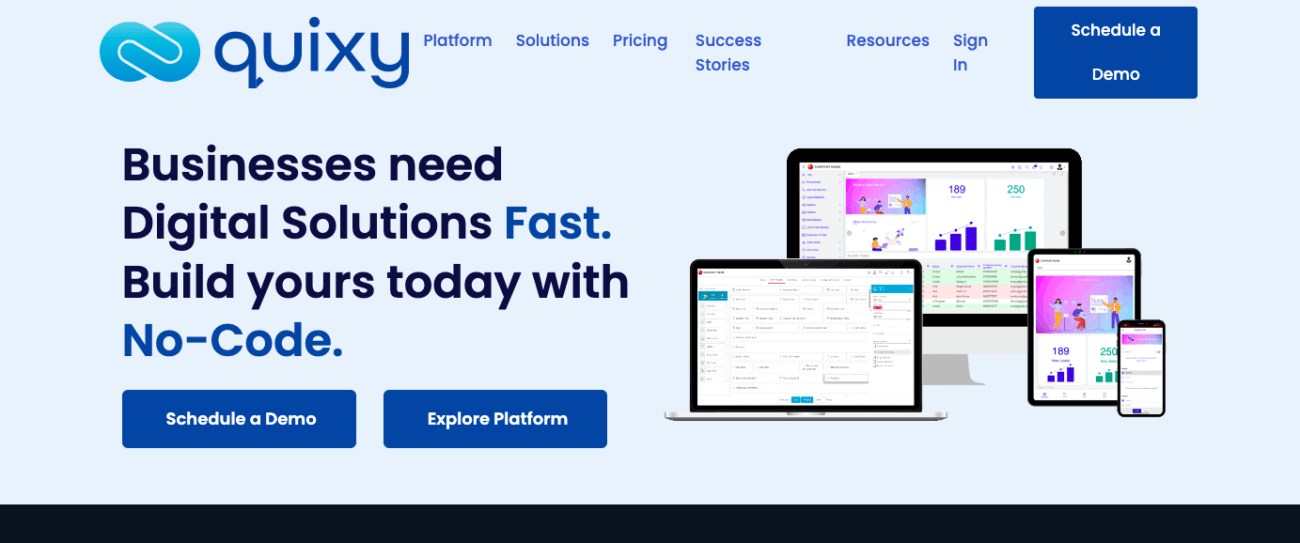
Quixy is a no-code platform that allows users to build custom applications quickly without needing any programming skills. It's designed to help organizations automate processes and increase productivity. Quixy is known for its intuitive interface, making it accessible for non-technical users while providing powerful features for more advanced needs.
Top 5 Features:
- No-code app builder with drag-and-drop interface
- Customizable workflows and processes
- Integration with popular third-party tools
- Real-time analytics and reporting
- Multi-device compatibility
5 Benefits:
- Accelerates app development without coding
- Improves workflow efficiency with automation
- Improves collaboration with real-time updates
- Reduces IT dependency for application development
- Increases flexibility with customizable solutions
2 Cons:
- May have limitations for very complex applications
- Integration options are somewhat limited
Best For:
Businesses looking for a no-code solution to quickly create and deploy custom applications.
4. Kissflow
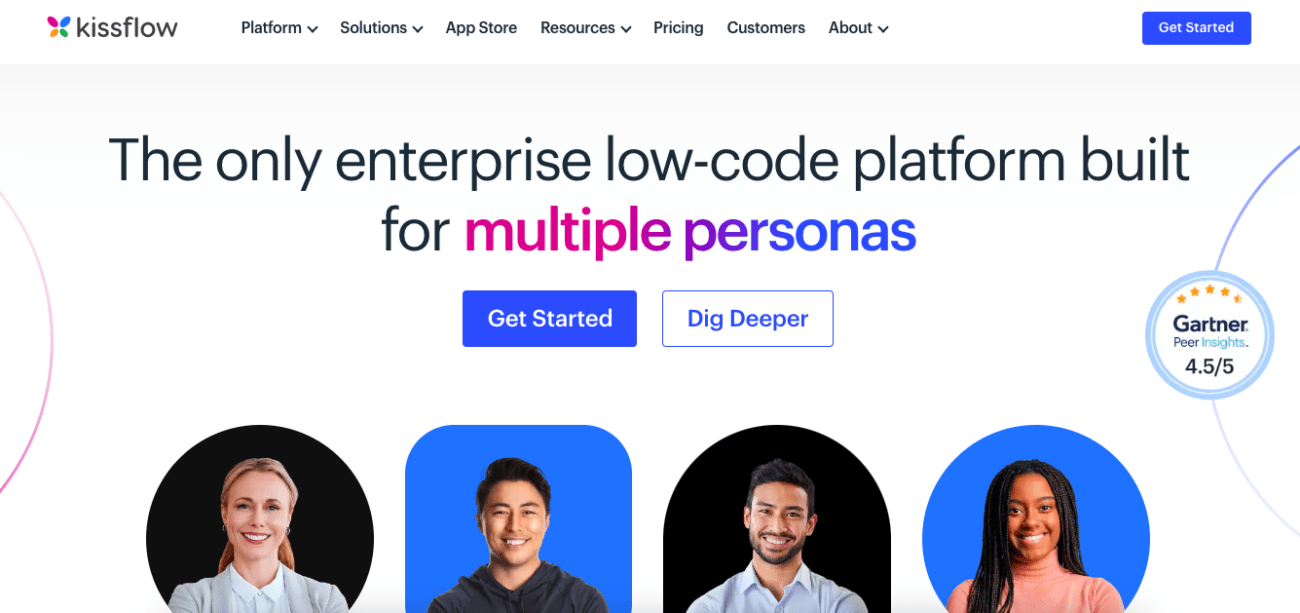
Kissflow is a unified digital workplace platform that allows businesses to automate workflows and build custom applications without coding. It offers a user-friendly interface and is designed to improve collaboration across teams. Kissflow is particularly well-suited for businesses that manage multiple processes in one place.
Top 5 Features:
- Visual workflow builder
- Pre-built templates for common processes
- Integration with popular enterprise apps
- Customizable forms and fields
- Real-time collaboration tools
5 Benefits:
- Simplifies process automation with drag-and-drop tools
- Increases productivity with centralized workflows
- Improves collaboration with real-time communication features
- Reduces development time with ready-to-use templates
- Improves efficiency with integrated process management
2 Cons:
- Limited customization options for complex workflows
- Pricing can be high for smaller teams
Best For:
Businesses seeking a unified platform for process automation and workflow management.
5. Outsystems
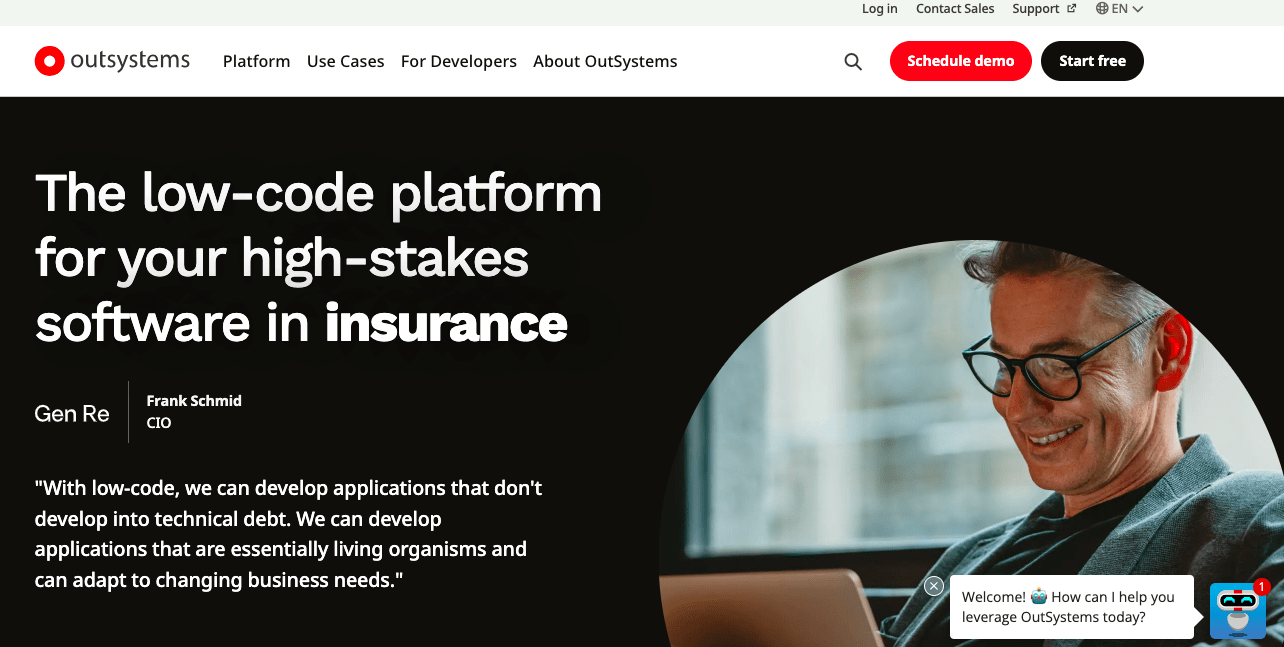
Outsystems is a powerful low-code platform designed for developing enterprise-grade applications. It offers robust tools for rapid development, integration, and deployment of complex applications. Outsystems is known for its scalability and ability to handle large, complex projects while maintaining ease of use.
Top 5 Features:
- Full-stack visual development environment
- Integrated DevOps capabilities
- Multi-channel deployment (web, mobile, IoT)
- Advanced security features
- Extensive third-party integrations
5 Benefits:
- Speeds up development of complex applications
- Improves security with built-in features
- Supports scalability with enterprise-grade tools
- Reduces time to market with integrated DevOps
- Facilitates seamless integration with existing systems
2 Cons:
- Steeper learning curve for non-technical users
- Higher cost compared to other low-code platforms
Best For:
Large enterprises needing a scalable, powerful platform for developing complex applications.
6. Salesforce Lightning
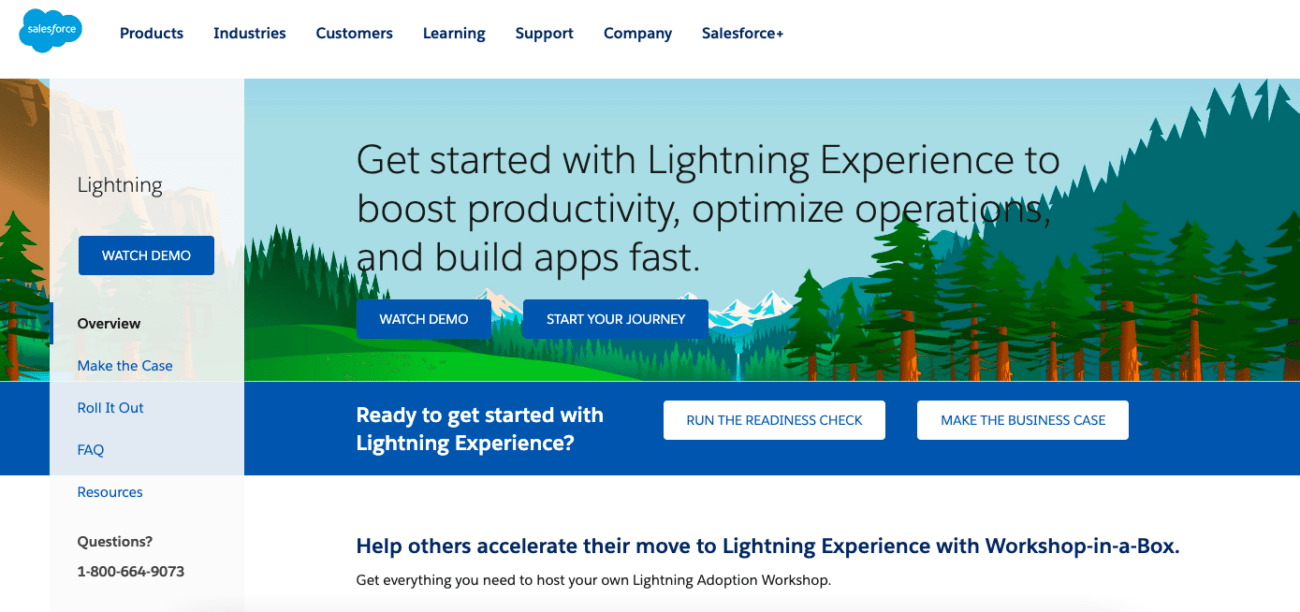
Salesforce Lightning is a component-based framework designed to build dynamic web applications for mobile and desktop devices within the Salesforce ecosystem. It provides tools that streamline app development and increase productivity, making it ideal for businesses heavily invested in Salesforce.
Top 5 Features:
- Component-based app builder
- Seamless integration with Salesforce CRM
- Pre-built components and templates
- AI-powered analytics with Einstein
- Mobile-first development tools
5 Benefits:
- Increases productivity with reusable components
- Integrates seamlessly with Salesforce products
- Improves decision-making with AI-driven insights
- Speeds up development with pre-built templates
- Optimizes apps for mobile and desktop devices
2 Cons:
- Limited to the Salesforce ecosystem
- Can be expensive for small businesses
Best For:
Businesses deeply integrated with Salesforce, looking to extend their CRM with custom applications.
7. Appian

Appian is a low-code automation platform that combines process automation, data management, and app development in a single interface. It is designed for enterprises that build complex, process-driven applications quickly. Appian is known for its ability to efficiently unify data and automate business processes.
Top 5 Features:
- Low-code app development platform
- Integrated process automation tools
- Unified data management
- Multi-experience deployment (web, mobile)
- AI and machine learning integration
5 Benefits:
- Accelerates development of process-driven applications
- Improves efficiency with process automation
- Centralizes data management for better insights
- Supports multi-device deployment for a broader reach
- Leverages AI for smarter decision-making
2 Cons:
- Higher cost for advanced features
- Complexity can be overwhelming for smaller teams
Best For:
Large enterprises looking to automate complex processes and manage data across multiple platforms.
8. Nintex

Nintex is a process automation platform that offers tools for building workflows, automating tasks, and creating custom applications without coding. It's designed to help organizations improve efficiency and reduce manual work with automation. Nintex is well-regarded for its ease of use and integration capabilities.
Top 5 Features:
- Visual workflow automation tools
- Drag-and-drop app builder
- Integration with popular business systems (e.g., SharePoint)
- Document generation and e-signature capabilities
- Real-time analytics and reporting
5 Benefits:
- Simplifies process automation with visual tools
- Reduces manual work with task automation
- Improves document management with built-in tools
- Improves collaboration with integrated systems
- Provides actionable insights with real-time reporting
2 Cons:
- Limited customization for complex workflows
- Pricing may be prohibitive for small businesses
Best For:
Organizations looking to automate repetitive tasks and streamline workflows.
9. Oracle Application Express (APEX)

Oracle Application Express (APEX) is a low-code development platform that enables users to build scalable, secure web applications. It is designed for rapid application development and deployment within the Oracle ecosystem. APEX is known for its ability to handle large volumes of data and complex business logic.
Top 5 Features:
- Low-code development environment
- Seamless integration with Oracle databases
- Advanced data handling and reporting
- Multi-user support with granular access control
- Responsive design for mobile and web
5 Benefits:
- Simplifies web app development with low-code tools
- Improves scalability with robust Oracle integration
- Supports complex business logic and data processing
- Improves security with granular access controls
- Enables responsive design for various devices
2 Cons:
- Best suited for users familiar with Oracle systems
- Limited third-party integration outside the Oracle ecosystem
Best For:
Organizations that are heavily invested in Oracle and need a platform for developing and deploying web applications quickly.
10. Bizagi
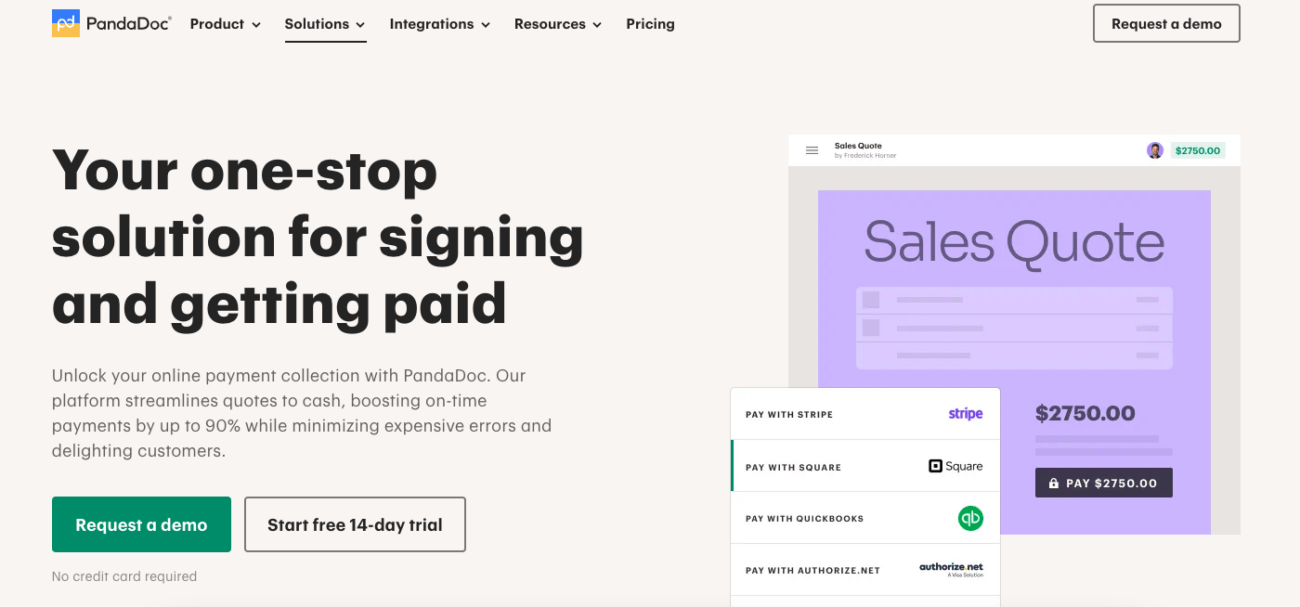
Bizagi is a business process management (BPM) platform that also offers rapid application development capabilities. It allows organizations to model, automate, and optimize business processes with an intuitive interface. Bizagi is known for its strong process management features, making it ideal for companies focused on improving operational efficiency.
Top 5 Features:
- Process modeling and automation tools
- Drag-and-drop interface for app building
- Integration with enterprise systems (e.g., ERP, CRM)
- Real-time process monitoring and analytics
- Multi-device deployment (web, mobile)
5 Benefits:
- Improves operational efficiency with process automation
- Simplifies app creation with an intuitive interface
- Integrates seamlessly with existing enterprise systems
- Improves decision-making with real-time analytics
- Supports flexibility with multi-device compatibility
2 Cons:
- Can be complex to set up for new users
- Limited customization options for highly specialized processes
Best For:
Organizations looking to optimize and automate business processes while developing custom applications to support those processes.
Top Features in Rapid Application Development Tools
RAD tools have key features that improve software development skills. They make building applications faster and more efficient.
Ready-Made Application Templates
Ready-made application templates are a big plus in RAD tools. They let you start projects with pre-made structures, speeding up development. You can also customize these templates to fit your needs, improving your software skills.
Visual Development Assistance
Visual development help is key. RAD tools often have drag-and-drop interfaces, which lets users make apps without deep coding knowledge and makes building apps easier for those new to programming.
Multi-Platform Compatibility
Being able to run apps on different platforms is a big plus. RAD tools make sure your app works on various devices and systems. This makes your app more accessible to users, which is a big part of modern app development.
End-to-End Lifecycle Management
Managing your project from start to finish is a strong feature of RAD tools. It helps you guide your project from design to maintenance. This approach makes the development process smoother and less prone to errors.
WYSIWYG Form Designers
WYSIWYG form designers are a user-friendly feature. They let you create forms visually without complex code, making app building easier.

Challenges of Rapid Application Development Tools
Rapid application development (RAD) tools have many benefits but also some downsides. Knowing these limitations can help you choose the best software for your projects. Here are some common challenges with RAD software.
- Limited Customization Flexibility: Many RAD tools don't offer the customization you might want. This can make it hard to make your applications fit your organization's needs. It might lead to less functionality and a worse user experience.
- Scalability Constraints: Scalability is a big issue with some RAD platforms. They might not handle big applications or grow with your user base. This could slow down your growth and limit how well your system performs.
- Integration Difficulties: Integrating RAD tools with other systems can be tough. These problems can break up your workflow, making it hard for teams to work together and share data smoothly.
- Insufficient Support for Complex Calculations: Some RAD tools don't support complex math well. This can hurt performance, especially in apps that need to process a lot of data and do detailed analytics.
- Documentation Challenges: Not having good documentation can be a big problem for new users of RAD tools. Without enough help, learning the system can be hard. This might cause confusion and slow down your work when using RAD software.
Rapid Application Development Compared to Other Software Development Models
Rapid Application Development (RAD) differs from traditional waterfall and agile development methods. The waterfall model follows a step-by-step approach, which means each phase must be finished before proceeding to the next one. This can make it difficult to change the project once it starts.
RAD focuses on iteration and user feedback and allows for changes even later in the process. This flexibility helps teams adjust to new needs and create products that meet user expectations.
Agile development also values iterative cycles and adapting to changes. But RAD is all about quick prototyping and iteration. This leads to faster delivery of working products. It's great for projects that need updates often or change as users' needs shift.
Looking at RAD versus waterfall or comparing it to agile development shows RAD's benefits. It's ideal for projects needing speed and flexibility without losing quality.
Kohezion: The Rapid App Development Solution You Need
Kohezion is a top choice for building apps quickly. It's great for both tech experts and beginners. It makes making apps easy with ready-to-use templates. With its simple interface, you can easily build apps that fit your needs.
Kohezion lets you make complex apps with unlimited workflow steps. You can test your apps in real time to find problems early. This means you can fix issues fast, making Kohezion perfect for quick projects.
The platform also gives you insights into how your app is doing before you even test it. This helps speed up development and make your apps better. With Kohezion, you get a powerful tool to quickly meet your app development goals.
Conclusion
RAD tools offer rapid prototyping and more flexibility, which helps teams work better together. Understanding the good and bad of RAD tools will help you choose the best ones for your needs.
The future of app development is all about speed and efficiency. Knowing about RAD tools helps you make smart choices that improve your projects. Choosing the right tools keeps your development quick and ready for new market changes.
When picking a RAD tool, think about what you need now and what you want in the future. The right RAD approach can lead to success, whether you're starting or growing. These tools can make your development smoother and keep you ahead in tech.
For more information on how Kohezion can improve your rapid application development process, or if you have any questions about finding the right RAD tools for your needs, feel free to contact us. We're here to help you make smart choices that keep your development fast and adaptable.
Start building with a free account
Frequently Asked Questions
RAD tools are ideal for projects that require quick turnaround times, frequent updates, or close collaboration between teams. They're especially useful for developing prototypes, MVPs (Minimum Viable Products), and applications that must be deployed and iterated on rapidly. However, they may not be the best fit for highly complex projects requiring extensive customizations.
While RAD tools are designed to be user-friendly, some level of programming knowledge can be beneficial. Many tools offer drag-and-drop features and visual interfaces that reduce the need for coding, but understanding basic coding concepts can help you get the most out of these tools. Advanced customization or integration may still require some coding skills.
RAD tools provide version control, automated testing, and easy deployment features to simplify the process of updating and maintaining applications. This makes it easier to roll out updates quickly without disrupting the application. However, you must have a clear plan for ongoing maintenance, especially if the application grows in complexity.
Security can be a concern when using RAD tools, especially if the tool doesn’t have strong built-in security features. Because RAD tools emphasize speed and ease of use, it's essential to ensure that security measures are not overlooked. Choose a tool that provides encryption, access controls, and compliance with industry standards to safeguard your data.
Support options for RAD tools can vary widely depending on the provider. Some offer extensive documentation, tutorials, and community forums, while others provide direct support with chat, email, or phone. Consider the level of support you'll need, especially if your team is new to using RAD tools. Choose a tool with support options that align with your needs.

